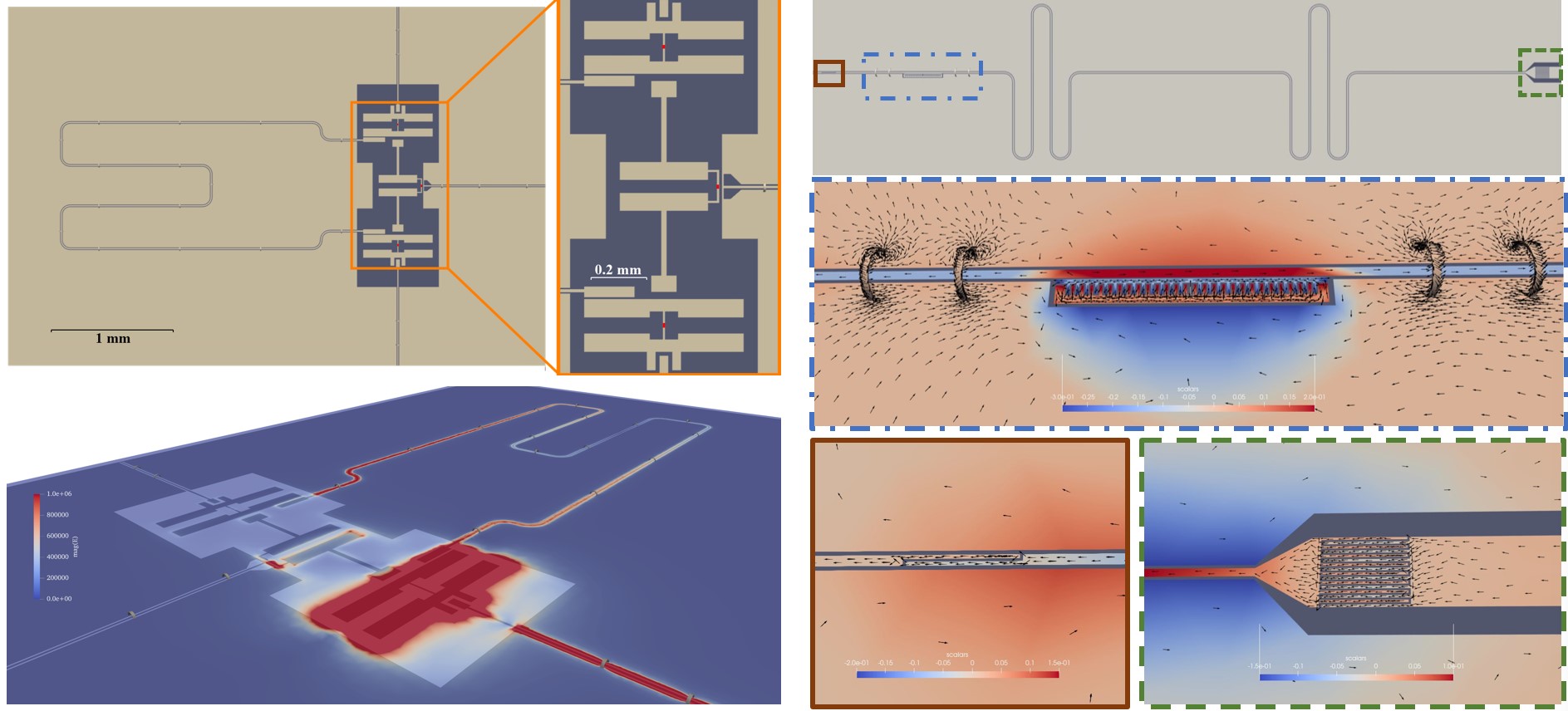Multiscale Computational Electromagnetics Methods
A surprising number of emerging quantum electromagnetic applications can be analyzed using completely classical CEM techniques. However, using these classical tools to model quantum applications requires the CEM method to perform increasingly broadband analyses of multiscale and subwavelength structures with complicated geometric features. This kind of analysis has long been a challenge for traditional CEM techniques that typically are not well-suited to modeling multiscale structures.
We have recently developed novel time domain integral equation solvers formulated in terms of the magnetic vector and electric scalar potentials. Our work has shown that potential-based methods can greatly outperform traditional approaches that describe the physics in terms of electric and magnetic fields when analyzing multiscale geometries. We are continuing to mature these techniques by making them applicable to a wider range of materials and by developing efficient preconditioners that can be used in accelerating the solution of practical multiscale systems. We are also engaged in similar work with differential equation solvers using the finite element method in both the frequency and time domains.

